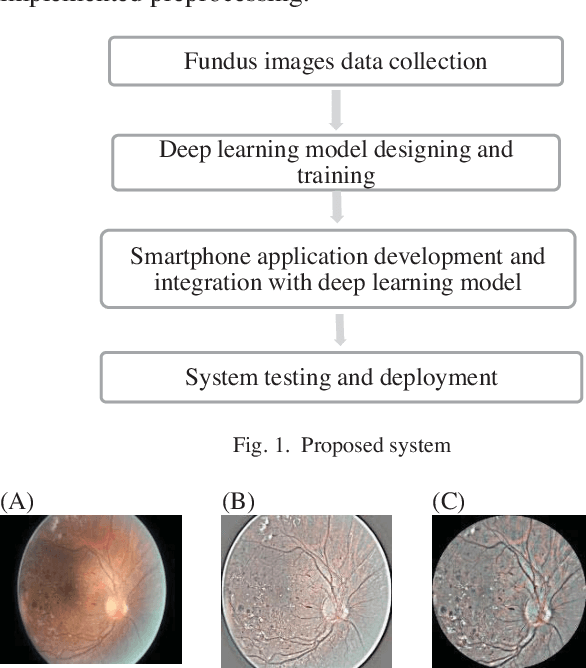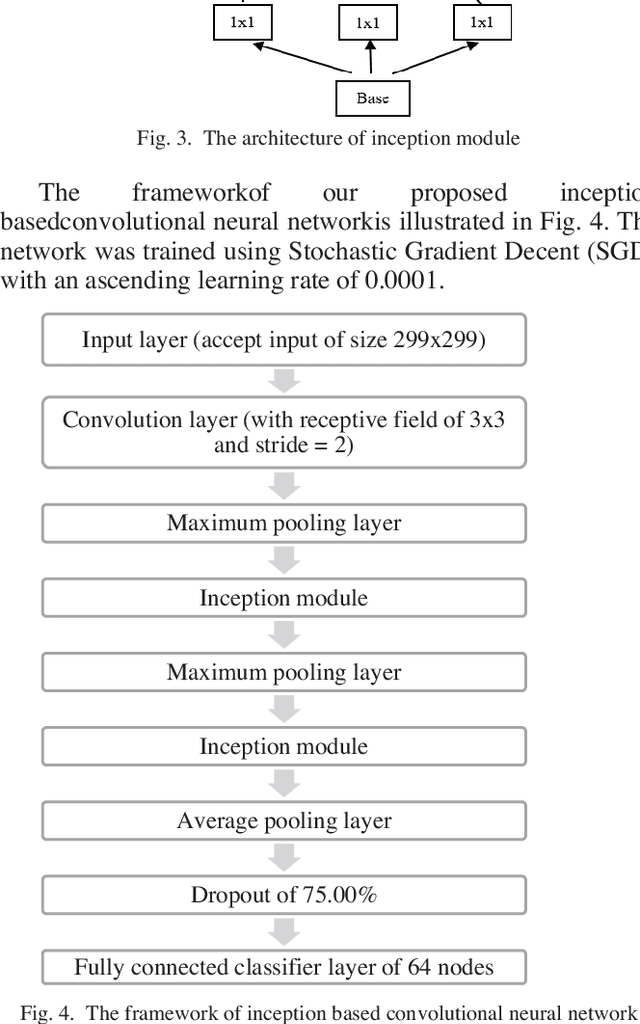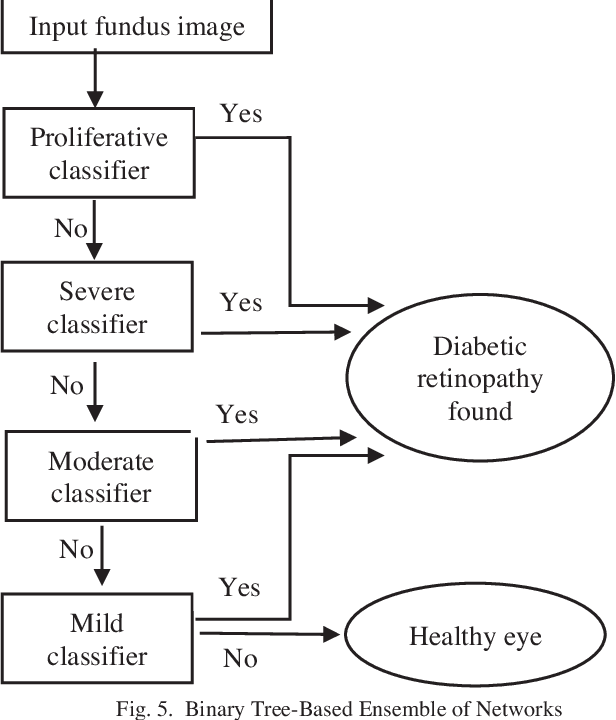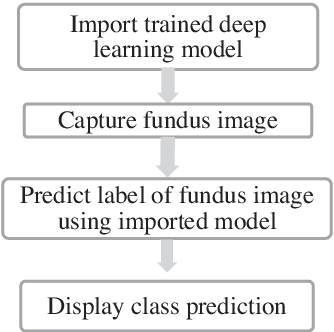Shri Kant
Automated Smartphone based System for Diagnosis of Diabetic Retinopathy
Apr 07, 2020



Abstract:Early diagnosis of diabetic retinopathy for treatment of the disease has been failing to reach diabetic people living in rural areas. Shortage of trained ophthalmologists, limited availability of healthcare centers, and expensiveness of diagnostic equipment are among the reasons. Although many deep learning-based automatic diagnosis of diabetic retinopathy techniques have been implemented in the literature, these methods still fail to provide a point-of-care diagnosis. This raises the need for an independent diagnostic of diabetic retinopathy that can be used by a non-expert. Recently the usage of smartphones has been increasing across the world. Automated diagnoses of diabetic retinopathy can be deployed on smartphones in order to provide an instant diagnosis to diabetic people residing in remote areas. In this paper, inception based convolutional neural network and binary decision tree-based ensemble of classifiers have been proposed and implemented to detect and classify diabetic retinopathy. The proposed method was further imported into a smartphone application for mobile-based classification, which provides an offline and automatic system for diagnosis of diabetic retinopathy.
* 12 pages, 4 figures, 4 tables, 1 appendix. Copyright \copyright 2019, IEEE. Published in: 2019 International Conference on Computing, Communication, and Intelligent Systems (ICCCIS)
Transfer Learning based Detection of Diabetic Retinopathy from Small Dataset
May 22, 2019



Abstract:Annotated training data insufficiency remains to be one of the challenges of applying deep learning in medical data classification problems. Transfer learning from an already trained deep convolutional network can be used to reduce the cost of training from scratch and to train with small training data for deep learning. This raises the question of whether we can use transfer learning to overcome the training data insufficiency problem in deep learning based medical data classifications. Deep convolutional networks have been achieving high performance results on the ImageNet Large Scale Visual Recognition Competition (ILSVRC) image classification challenge. One example is the Inception-V3 model that was the first runner up on the ILSVRC 2015 challenge. Inception modules that help to extract different sized features of input images in one level of convolution are the unique features of the Inception-V3. In this work, we have used a pretrained Inception-V3 model to take advantage of its Inception modules for Diabetic Retinopathy detection. In order to tackle the labelled data insufficiency problem, we sub-sampled a smaller version of the Kaggle Diabetic Retinopathy classification challenge dataset for model training, and tested the model's accuracy on a previously unseen data subset. Our technique could be used in other deep learning based medical image classification problems facing the challenge of labeled training data insufficiency.
 Add to Chrome
Add to Chrome Add to Firefox
Add to Firefox Add to Edge
Add to Edge